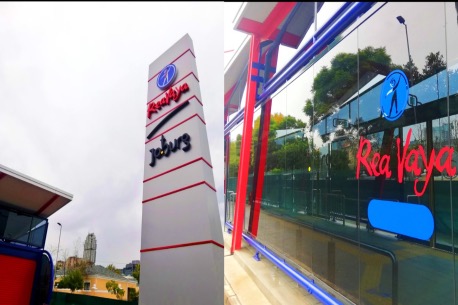THE City of Johannesburg has officially launched Rea Vaya Phase 1C, a major milestone in its efforts to improve public transport, reduce congestion, and connect key economic hubs across the city.
The launch at Marlboro Community Hall on Thursday, 23 October 2025, was led by Executive Mayor Cllr Dada Morero, alongside MMC for Transport Cllr Kenny Kunene, MMC for Development Planning Cllr Eunice Mgcina, and leaders from the Alexandra, Randburg, Midrand, Sandton Taxi Association (ARMSTA) and the Alexandra Taxi Association (ATA).
Since the inception of Rea Vaya in 2009, the Johannesburg Development Agency (JDA), as the City’s infrastructure implementing agent, has played a central role in planning, designing, and constructing key elements of Johannesburg’s Bus Rapid Transit (BRT) network.
“The JDA’s work on the Rea Vaya Phase 1C(a) route will effectively reshape how people connect across the city,” said JDA CEO Themba Mathiba. “This project demonstrates how strategic investment in mobility infrastructure can drive inclusivity, accessibility, and sustainability in Johannesburg.”
The JDA’s implementation of the Rea Vaya Phase 1C(a) corridor includes:
· 13 of the 15 new low-floor BRT stations completed, with the Sandton City and Gandhi Square stations set for completion in early 2026.
· Three major bridges enhancing connectivity and non-motorised mobility:
o The Basebetsi (Lees Street/Marlboro) pedestrian and bus bridge,
o The Grayston (Kopanang) walking and cycling bridge, and
o The Houghton pedestrian bridge, providing a safer route for residents.
· A cycling and walking path linking Alexandra and Sandton, now fully open to the public.
· The near completion (90%) of the Selby Bus Depot, which will serve as the operations, maintenance, and control centre for the Rea Vaya fleet.
· Completion of the Watt Interchange, a critical transport hub enabling smooth transfers between BRT, taxis, and Metrobus services in Alexandra and Wynberg.
Cllr Mgcina hailed the project as “a new beginning and a beacon of hope for thousands of workers, businesses, and commuters” travelling daily between the Joburg CBD, Alexandra, and Sandton CBD. She noted that the corridor’s upgrades — including stormwater systems, pedestrian bridges, and urban renewal projects — have transformed the route.
The new Phase 1C route will operate 68 modern buses along Louis Botha Avenue, connecting the Joburg CBD, Orange Grove, Bramley, Alexandra, Wynberg, Marlboro, and Sandton. Fifteen new stations have been built under the supervision of the Joburg Development Agency (JDA), each offering free Wi-Fi powered by Joburg Metropolitan Tech.
Cllr Kunene commended the collaboration between the City and taxi associations, highlighting their role in the project’s success. “When I was appointed in 2023, I found ongoing negotiations around this project. Working with the Alexandra associations was a pleasure — there’s order and leadership there. Together with the Gauteng MEC for Transport, we’ve set up a crisis committee to ensure all affected operators are fairly compensated,” he said.
He confirmed that the new route will officially begin operating on 1 November 2025, managed by ABC Transport, adding enthusiastically, “I’ll also be using Rea Vaya to get to the office in the Joburg CBD.”
Delivering the keynote address, Mayor Morero applauded the project team and paid tribute to former Mayor Amos Masondo, who pioneered the Rea Vaya concept in 2006. “Rea Vaya remains one of the safest and most reliable transport systems in Johannesburg,” he said, urging residents to embrace public transport as the city advances towards a more sustainable, inclusive, and integrated mobility future.

